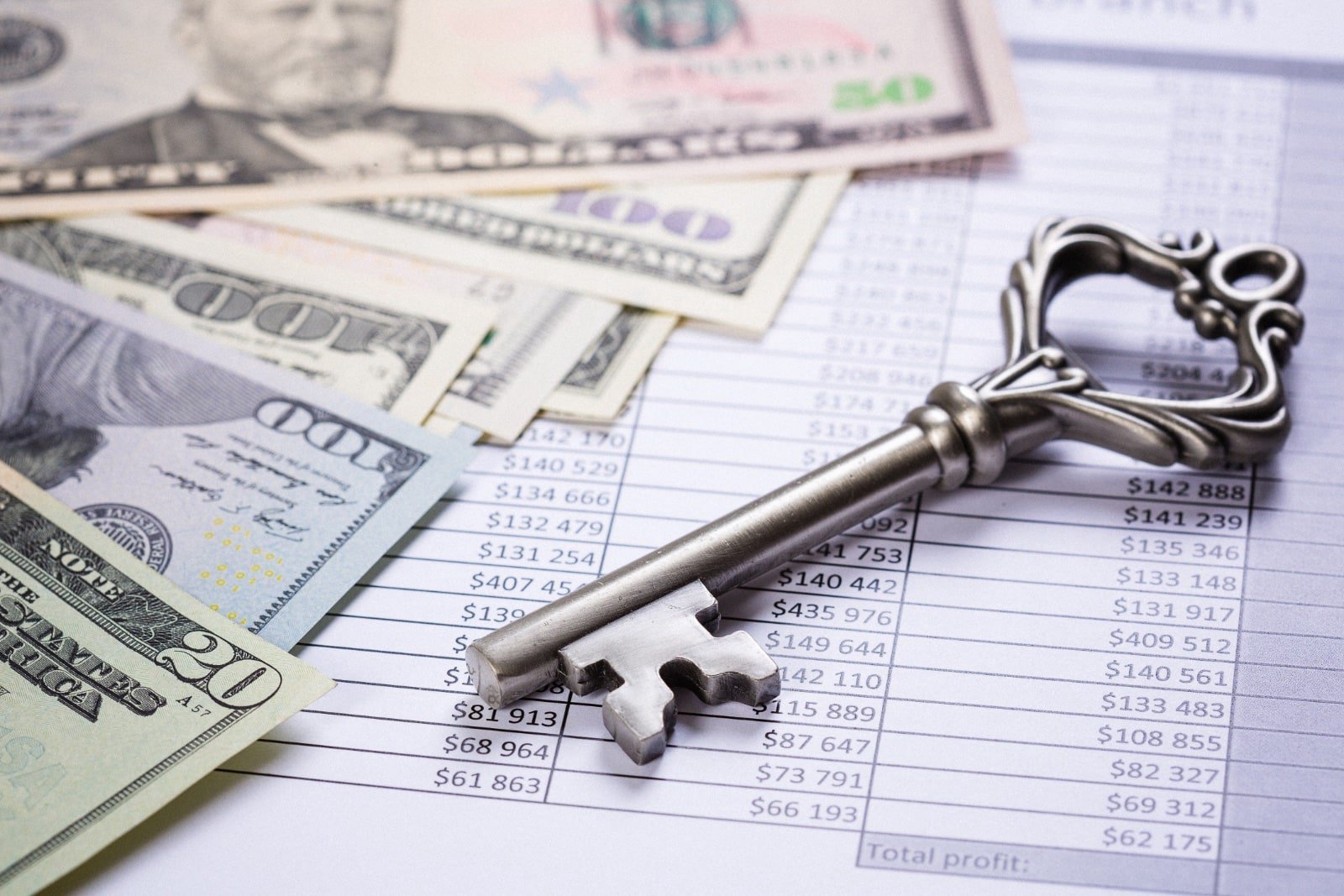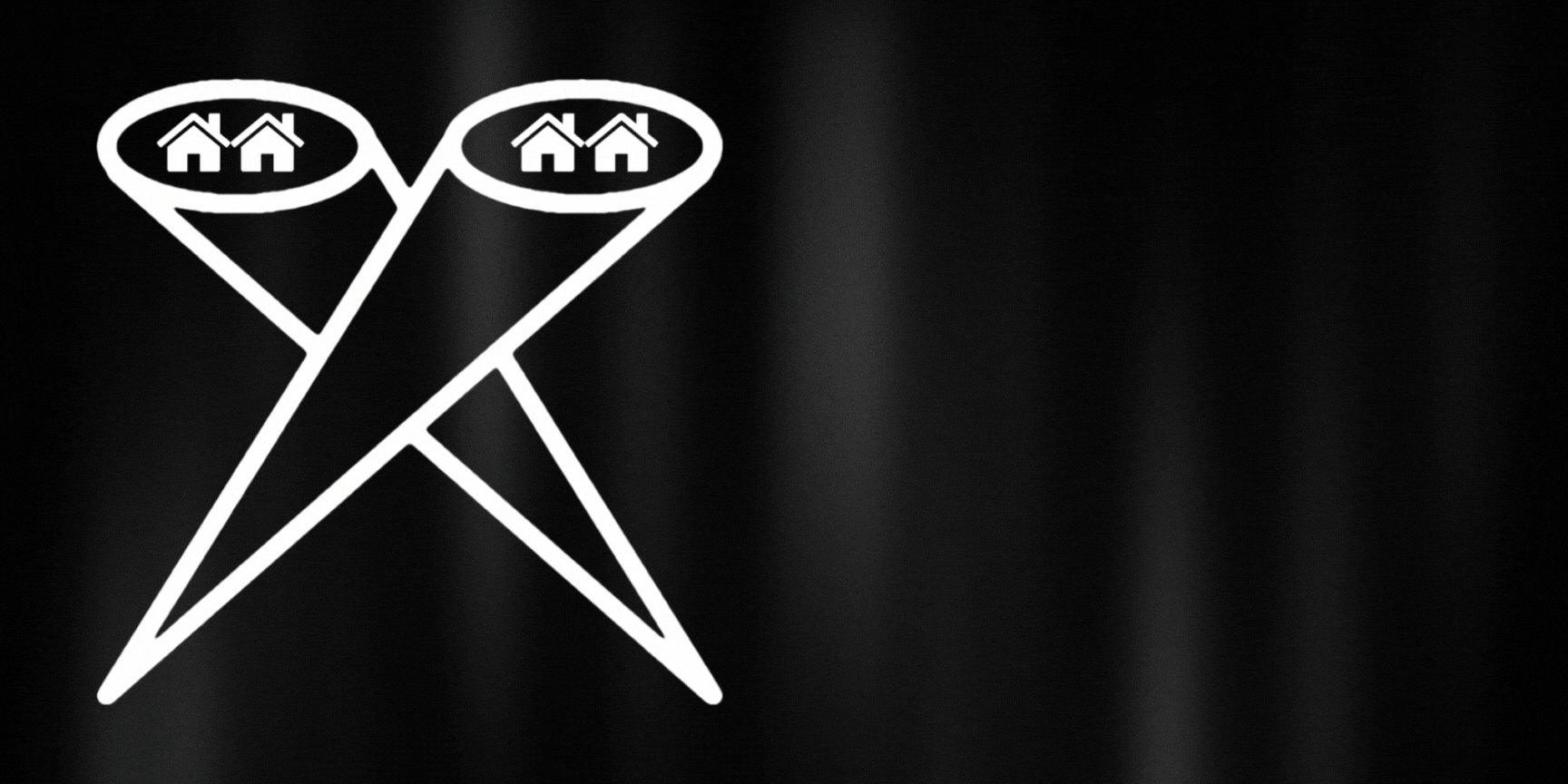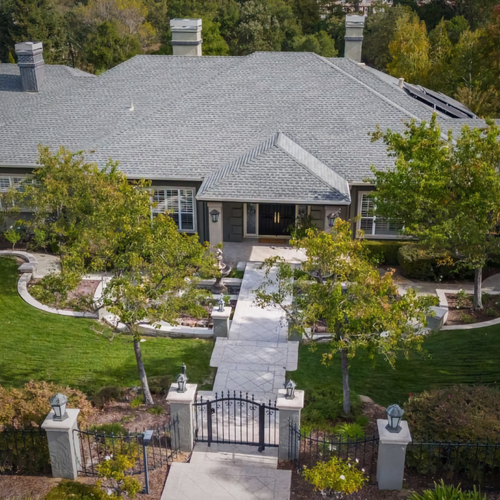When buying or selling real estate in the Bay Area, understanding closing costs and how closing cost credits work can make a significant difference in the success of your transaction. These costs are an essential part of any real estate deal, but they’re often misunderstood by buyers and sellers alike. Let’s break down what closing costs are, what they consist of, and how closing cost credits can be used strategically to aid in the purchase and sale of real estate.
This article begins with an overview of buyer closing costs; click here to jump down to the section dealing with closing cost credits.
What are Closing Costs?
Closing costs are the various fees and expenses associated with finalizing a real estate transaction. These costs are typically paid at the close of escrow when the property officially changes hands from the seller to the buyer. For buyers, closing costs are in addition to their down payment and are usually paid in cash at closing.
Closing costs can be divided into two categories:
- Recurring closing costs – expenses that continue after the purchase (e.g., property taxes, homeowners insurance).
- Non-recurring closing costs – one-time fees associated with the transaction (e.g., loan origination fees, title insurance).
Buyer’s Closing Costs by Loan Type
Let’s take a closer look at what a buyer’s closing costs are likely to be for different types of financing commonly used in the Bay Area: Conventional financing, FHA financing, and VA financing.
1. Conventional Financing
Conventional loans are the most common type of mortgage for buyers in the Bay Area. These loans typically require a down payment of at least 5% (though 20% is ideal to avoid private mortgage insurance).
Typical closing costs for conventional loans include:
- Loan origination fee: 0.5% – 1% of the loan amount
- Appraisal fee: $500 – $800
- Credit report fee: $30 – $50
- Title insurance: $1,000 – $2,000 (varies by property value)
- Escrow fees: $1,500 – $3,000
- Property taxes: Prorated based on the closing date and current assessed value
- Homeowners insurance: Typically pre-paid for the first year at closing
- Recording fees: $125 – $250
- Prepaid interest: Based on the number of days remaining in the month at closing
- Discount points: Optional, to reduce the interest rate (each point costs 1% of the loan amount)
For a $1,000,000 home purchase in the Bay Area, buyers can expect to pay between 2% and 5% of the purchase price in closing costs — roughly $20,000 to $50,000.
2. FHA Financing
FHA loans are government-backed loans designed to help buyers with lower credit scores or smaller down payments qualify for a mortgage. These loans require a minimum down payment of 3.5%.
FHA loan closing costs include:
- Upfront mortgage insurance premium (UFMIP): 1.75% of the loan amount (can be rolled into the loan)
- Loan origination fee: 0.5% – 1% of the loan amount
- Appraisal fee: $500 – $800
- Credit report fee: $30 – $50
- Title insurance: $1,000 – $2,000
- Escrow fee: $1,500 – $3,000
- Property taxes: Prorated based on sale date and current assessed value
- Homeowners insurance: Typically prepaid for the first year
- Recording fees: $125 – $250
- Prepaid interest: Varies by closing date
- Discount points: Optional
In addition to the upfront mortgage insurance premium, FHA loans require monthly mortgage insurance payments, making them more expensive over time compared to loans made with at least 20% down.
3. VA Financing
VA loans are available to eligible veterans and active-duty military members and typically require no down payment.
VA loan closing costs include:
- VA funding fee: Ranges from 1.25% to 3.3% of the loan amount (can be financed into the loan)
- Loan origination fee: Capped at 1% of the loan amount
- Appraisal fee: $500 – $800
- Credit report fee: $30 – $50
- Title insurance: $1,000 – $2,000
- Escrow fee: $1,500 – $3,000
- Property taxes: Prorated based on sale date and current assessed value
- Homeowners insurance: Prepaid for the first year
- Recording fees: $125 – $250
- Prepaid interest: Varies by closing date
- Discount points: Optional
The VA funding fee can be waived for certain veterans with service-related disabilities.
What Are Recurring vs. Non-Recurring Closing Costs?
Understanding the difference between recurring and non-recurring closing costs is key for both buyers and sellers.
Non-Recurring Closing Costs (One-Time Fees)
These are the fees you pay once at closing, including:
- Loan origination fees
- Appraisal fees
- Title insurance
- Escrow fees
- Recording fees
- Discount points
- Home Warranty
- Buyer Broker Representation (if applicable)
Recurring Closing Costs (Ongoing Expenses)
These are ongoing costs that the buyer will continue to pay after the purchase, including:
- Property taxes
- Homeowners insurance
- Prepaid interest
- HOA dues (if applicable)
- Private mortgage insurance (if required)
What Is Prepaid Interest?
Prepaid interest refers to the interest that a homebuyer pays upfront at closing to cover the period between the closing date of their home purchase and the first scheduled mortgage payment. This ensures that the lender is compensated for the time between when the loan is funded and when the buyer’s regular monthly payments begin.
Since mortgage payments are typically due on the first of each month and cover the interest for the previous month, lenders require borrowers to prepay the interest that accrues from the day the loan closes until the end of that month. Thus, for homes closing on one of the first days of the month, there will be a much more prepaid interest than for a home closing on one of the last days of the month.
Why Do Buyers Pay Prepaid Interest?
Prepaid interest is necessary because there is always a gap between the closing date and the first mortgage payment due date. For example, if a home closes on December 20, the buyer won’t make their first mortgage payment until February 1. That February 1 payment will cover the interest for January, but the lender also needs to collect the interest for the remaining days of December. Therefore, the buyer pays prepaid interest at closing for the period between December 20 and December 31.
How Prepaid Interest Is Calculated
Prepaid interest is calculated based on:
- The loan amount
- The interest rate
- The number of days between the closing date and the end of the month
The formula for calculating prepaid interest is:
Daily Interest = (Loan Amount × Interest Rate) ÷ 365 days
Then, multiply the daily interest by the number of days remaining in the month to determine the total prepaid interest.
Example Prepaid Interest Calculation
Let’s say:
- Loan amount: $1,000,000
- Interest rate: 6%
- Closing date: December 20
1. Daily interest:
(1,000,000 × 0.06) ÷ 365 = $164.38 per day
2. Number of days to prepay:
From December 20 to December 31 is 12 days.
3. Prepaid interest owed:
$164.38 × 12 = $1,972.56
The buyer would need to pay $1,972.56 in prepaid interest at closing as part of their closing costs. Even though you’d only pay “prepaid interest” once, it is still considered a recurring cost since mortgage interest is a recurring cost.
How Prepaid Interest Affects the First Mortgage Payment
Prepaid interest means that the buyer’s first mortgage payment is delayed. Using the earlier example:
- The home closes on December 20.
- The buyer pays prepaid interest for December 20-31.
- The first mortgage payment is due on February 1, covering January’s interest.
Why Prepaid Interest Matters in Real Estate Transactions
Prepaid interest is important because it:
- Affects the total amount of cash a buyer needs at closing.
- Can be strategically managed by selecting the closing date.
Understanding prepaid interest helps buyers budget more effectively and ensures there are no surprises when closing day arrives. It’s just one of many closing costs that buyers need to account for when purchasing a home.
Discount Points and Prepaid Mortgage Insurance
Discount Points
Discount points are optional upfront payments made at closing to reduce a mortgage’s interest rate, with each point costing 1% of the loan amount and lowering the rate. The amount the rate will be reduced per discount point varies considerably from time to time; sometimes, paying discount points is almost a no-brainer, and other times, it just doesn’t pencil out.
Generally speaking however, they make sense for buyers who plan to stay in the home long-term, as the savings in monthly payments can offset the upfront cost over time. However, for buyers who plan to sell or refinance within a few years, paying for points may not be worthwhile since they won’t own the home long enough to break even on the initial cost. It’s important to calculate the break-even point before deciding if buying points is a smart financial move.
Prepaid Mortgage Insurance
Prepaid mortgage insurance is an upfront payment made at closing to cover private mortgage insurance (PMI), required for buyers putting down less than 20% on a conventional loan. Paying PMI upfront can reduce monthly payments and may save money over time compared to monthly PMI premiums. It makes sense for buyers with extra cash at closing who want to lower their ongoing expenses. However, it may not be ideal for buyers who are low on cash or plan to refinance soon, as they won’t recover the upfront cost quickly.
What Are Closing Cost Credits?
A closing cost credit, also known as a seller concession or closing cost assistance, is when the seller agrees to pay a portion of the buyer’s closing costs as part of the real estate transaction. Rather than lowering the purchase price, the seller offers a financial credit that reduces the amount of cash the buyer needs to bring to the closing table. This can make a huge difference for buyers who are low on cash or want to preserve their savings for future expenses, such as renovations, furniture, or unforeseen repairs.
Closing cost credits are a negotiable item in the purchase agreement and can be structured in various ways to suit both parties. They are a powerful tool for buyers to manage their upfront costs and for sellers to make their property more attractive in a competitive market or to address issues that arise during the escrow process.
How Closing Cost Credits Work
A closing cost credit is essentially a rebate from the seller to cover the buyer’s transaction expenses. The credit amount is typically applied at closing and reduces the amount of cash the buyer needs to pay for non-recurring and recurring closing costs.
For example:
- Purchase price: $1,000,000
- Buyer’s down payment (10%): $100,000
- Estimated closing costs: $35,000
- Closing cost credit from the seller: $30,000 (3%)
In this scenario, the buyer only needs to bring $5,000 in cash for closing costs instead of $35,000. The seller effectively absorbs a portion of the buyer’s expenses, making it easier for the buyer to complete the transaction.
Why Would a Seller Offer a Closing Cost Credit?
There are several reasons a seller might offer a closing cost credit:
1. To Attract Buyers in a Competitive Market
In high-cost markets like the Bay Area, closing costs can be a financial hurdle for buyers, especially first-time buyers or those with limited cash reserves. Offering a closing cost credit can make the property more appealing by lowering the buyer’s upfront financial burden.
2. To Offset Repairs or Defects Discovered During the Inspection
A common reason for closing cost credits is to address issues that come up during the home inspection. Instead of making repairs themselves, sellers often prefer to offer a credit so that the buyer can handle the repairs after closing. This is particularly useful when:
- The seller doesn’t want to do any repairs, but buyer (or buyer’s lender) feel repairs are required.
- The buyer prefers to oversee the repair process to ensure quality work at reasonable cost
- The buyer wants to use specific contractors, or do the work themselves.
3. To Help Buyers with Financing Limitations
Buyers using FHA or VA loans often have stricter financial limitations. These loan programs allow for seller-paid closing costs, which can be a lifeline for buyers who are already stretching their budgets to afford a home in an expensive market. Offering a credit can make a deal work when buyers might otherwise struggle to come up with cash for closing.
How Buyers Benefit from Closing Cost Credits
A closing cost credit can be a game-changer for buyers in the Bay Area, where home prices and transaction costs are among the highest in the country. Here’s how buyers benefit from this type of concession:
1. Reduced Out-of-Pocket Costs
The most obvious benefit of a closing cost credit is that it reduces the amount of cash buyers need to bring to closing. This can make homeownership more attainable for buyers who are cash-strapped but otherwise qualified for a mortgage.
2. More Flexibility in Allocating Funds
Instead of depleting their savings to cover closing costs, buyers can use those funds for other purposes, such as:
- Renovations or repairs
- Buying furniture
- Building or maintaining an emergency fund
- Moving or Relocation Costs
3. Help for First-Time Buyers
First-time homebuyers often have less cash available for closing costs. A closing cost credit can bridge the financial gap and make the difference between buying a home or walking away from the deal.
How Sellers Benefit from Offering Closing Cost Credits
While a closing cost credit may seem like a concession on the seller’s part, it can actually benefit the seller in several ways:
1. Attract More Offers
In a market where affordability is a concern, offering a closing cost credit can make a property more appealing to buyers. This can result in more offers and potentially a faster sale. After all, sellers ought not care about giving a closing cost credit, so long as the net cash to them and other offer terms are satisfactory.
2. Avoid Repairs and Negotiations
Offering a credit in lieu of repairs allows sellers to avoid the hassle of making repairs themselves – which can open up a whole can of worms, if the repairs take too long, cost too much, or are not completed to the buyer’s satisfaction. It also gives buyers the flexibility to choose their own contractors and timeline for repairs.
3. Maintain a Higher Purchase Price
Instead of lowering the purchase price to attract buyers, sellers can offer a closing cost credit. This may allow the buyer to pay an even higher price for the property, in excess of the cost of the credit, as the buyers may place a greater premium on the closing cost credit and willing to pay a higher price for the concession.
Common Scenarios for Closing Cost Credits
There are a few common situations where closing cost credits come into play:
1. Upfront Request in the Offer
Buyers may request a closing cost credit as part of their initial offer. For example, a buyer might offer $950,000 on a $1,000,000 listing but ask for a $50,000 closing cost credit. This allows the buyer to cover their closing costs without needing additional cash at closing. If the buyer only has $35,000 cash on hand, that $50,000 closing cost credit might well be what’s required for them to buy the home with only 3.5% down on a FHA offer.
2. During the Inspection Contingency Period
After a home inspection, buyers may discover needed repairs and negotiate a closing cost credit instead of asking the seller to complete the repairs. This is often a win-win:
- The buyer gets funds to handle the repairs as they see fit.
- The seller doesn’t have to coordinate repairs, which can delay closing.
How Much Can a Seller Contribute? (Limits on Closing Cost Credits)
There are limits to how much a seller can contribute toward a buyer’s closing costs, depending on the type of loan:
Loan Type Maximum Seller Contribution
Conventional Loan: 3% to 9% (depending on down payment)
FHA Loan: 6%
VA Loan: 4%
Potential Downsides of Closing Cost Credits
While closing cost credits can be beneficial, there are some potential downsides:
1. Impact on Appraisal
If the purchase price is inflated to account for a closing cost credit, the property may not appraise at the agreed price, which can complicate the transaction. However, this concern may be exaggerated in the Bay Area, where low appraisals are rarely deal breakers.
2. Seller’s Net Proceeds
A closing cost credit reduces the seller’s net proceeds from the sale. Sellers need to weigh this against the potential benefits of securing a buyer quickly.
Example Scenario of a Closing Cost Credit Negotiation
Let’s say a buyer offers $1,000,000 for a home but asks for a $10,000 closing cost credit. The seller accepts the offer but during the home inspection, the buyer discovers that the roof needs repairs estimated at $15,000. Rather than asking the seller to fix the roof, the buyer negotiates an additional $15,000 closing cost credit, bringing the total credit to $25,000.
In this case:
- The buyer uses the credit to cover closing costs with additional money saved to pay for repairs after closing.
- The seller avoids the hassle of coordinating repairs and still closes the deal.
How to Spend Leftover Closing Cost Credits
It is not uncommon to have “leftover” closing credits. For example, when a buyer makes am offer, they specify that the seller is to pay up to 3% of the buyer’s closing costs, which might total, say, $15,000. It could be that the buyer actually only has $12,500 in closing costs – so unless the buyer can find some other way to spend that $2,500 the seller will end up keeping it. If you are in this situation, here are some ways you might be able to use the “leftover” closing cost credits:
- Pre-Pay HOA Dues
- Buy additional home warranty coverage
- Have some minor repair done and have the contractor paid out of the credit at closing
- Ask the seller to give a lesser credit and reduce the sale price to reflect that
There may be some other options for you depending on your loan type. If you have any leftover closing cost credits to use, the best person to talk to about the ideal way to use them up would be your lender.
Final Thoughts on Closing Cost Credits
Understanding closing costs and how closing cost credits work can help buyers and sellers navigate real estate transactions more effectively. For buyers, these credits can reduce out-of-pocket expenses and make homeownership more accessible. For sellers, offering a closing cost credit can sweeten the deal and ensure a smoother transaction. Whether you’re buying or selling, being informed about these costs will help you make the best decisions for your financial future.
Closing cost credits are a valuable tool for both buyers and sellers in Bay Area real estate transactions. They can help buyers reduce upfront expenses, especially in a high-cost market, and allow sellers to facilitate a smoother transaction without the need to lower their asking price or complete repairs themselves. Understanding how these credits work and negotiating them effectively can make a significant difference in achieving a successful home purchase or sale.
Prime Condos & Townhomes for Sale in Silicon Valley
2
3
4
5
6
7
8
9
10
11
12
13
14
15
16
17
18
19
20
21
22
23
24
25







